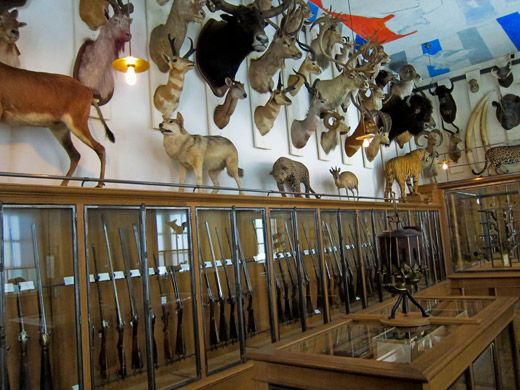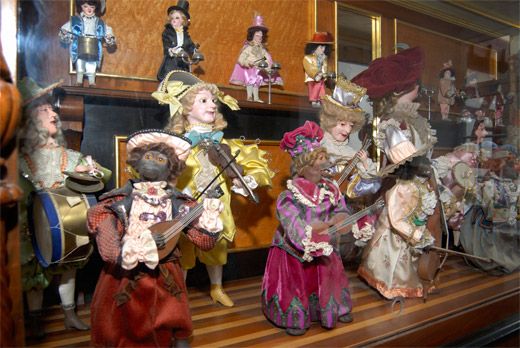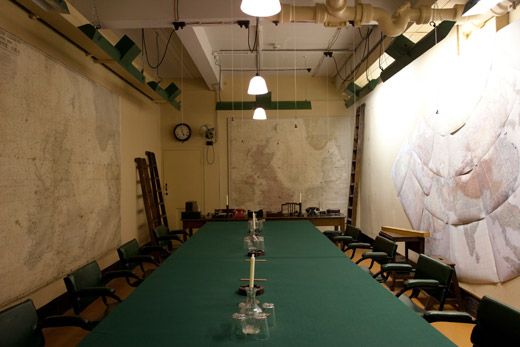The Offbeat Museums of Europe
Lost souls, music boxes and shoes fill some of the continent’s most peculiar collections
/https://tf-cmsv2-smithsonianmag-media.s3.amazonaws.com/filer/Euro-Museums-Siegfrieds-Mechanical-Instrument-Museum-631.jpg)
Despite the proliferation of eccentric little museum in this country in recent decades, the United States has no monopoly on them. Europe has a venerable tradition of odd private collections that can be traced back to the Renaissance, when gentlemen and scholars would create their own cabinets of curiosity, each one a miscellany of ancient relics, natural history “wonders” and offbeat artworks, to amaze and impress their friends. Some of these, like the collection of 17th- century scholar Elias Ashmole in Oxford, became so large that they expanded into museums that were ultimately opened to the public. (Ashmole’s oddities were the basis of the current Ashmolean Museum, for example.) Here are five of today’s more intriguing collections that focus on specific niches and can be wonders in and of themselves:
1. The Museum of Souls in Purgatory—Rome, Italy
Almost hidden inside the sepulchral Church of the Sacred Heart near the banks of the Tiber is a small, shadowy room to the right of the altar. There, glass wall cabinets display an array of yellowing prayer books, frayed bed linen and ancient clothing, with each item appearing to have the mark of a human finger or hand burned into it. The ghostly scars on them, the guardians explain, are really pleas for assistance from lost souls to their loved ones. In Catholic theology, the spirits of the dead can be trapped for centuries between Heaven and Hell while atoning for their sins, but the prayers and masses of the living can hasten their passage. This belief, popular in the Middle Ages, began to lose credibility in the scientific age, so a French priest named Victor Jouet traveled around Western Europe in the early 1900s to gather “evidence” that troubled souls do indeed walk among us and need our assistance to escape their torment. Jouet himself died in the residential areas of the church, but his soul has left no mark – presumably Saint Peter allowed him through the gates of Heaven without assistance.
12 Lungotevere Prati, Rome; open 7-11 a.m. and 5-7 p.m.; free entry
2. Siegfried’s Mechanical Music Museum—Rüdesheim, Germany
Rüdesheim (pronounced Rude-ess-heim) is a popular stop for riverboats cruising the Rhineand filled with timber-walled medieval buildings, cuckoo clock stores and beer gardens containing live oom-pah-pah bands. But it’s also home to a fantastical museum, Siegfried’s Mechanical Music Cabinet. This is the brainchild of eccentric Siegfried Wendel, whose hobby in the 1960s was to rescue and repair 19th-century “automatic musical instruments” that were being discarded as scrap metal. Today, Herr Wendel is still at work in his 70s, and his Musik-Kabinett displays 350 or so automatic musical instruments—prototype jukeboxes, hand-cranked carnival machines and monstrous pianolas—all still in working order. Several gramophones still transmit voices directly from the 19th century, as they turn wax barrels that recorded the voices of opera legends such as Enrico Caruso. The most elaborate devices are the century-old orchestrions– huge wooden artworks as large as minibuses that play all the instruments of an orchestra, including trombones and cymbals. The sound can be deafening, and the first audiences in the early 1900s apparently regarded them as either unholy creations of the devil or the Eighth Wonder of the World. But everyone marvels at the device that plays six violins in perfect harmony like an invisible chamber group.
Oberstrasse 29, Rüdesheim am Rhein, open daily, 10 a.m.-6 p.m. (10 p.m. in summer); €6 entry; www.siegfrieds-musikkabinett.de.
3. The Cabinet War Rooms–London, England
In the dark days of the blitz, when Nazi bombs were raining on London, Prime Minister Winston Churchill and his ministers were forced to run the war from a secret bunker below Whitehall. The accommodations were claustrophobic; ministers were often forced to sleep in cots as if in a public school dorm; and it was from here, via BBC radio microphone, that Churchill made some of his most famous speeches. These rooms remained in operation right up until the day after the Japanese surrender in August 1945, when staff simply turned off the lights and locked the doors. All but forgotten in the postwar reconstruction, the Cabinet Rooms were left intact until they were reopened to the public in the 1980s. The place itself is a thrilling step back in time: in the Map Room, the charts of Europe and the Pacific still have the pins where they were left on VJ Day. Churchill’s private bedroom was finally opened to viewing in 2003, followed by a Churchill Museum whose high-tech, interactive exhibits stand in stark contrast to the bunker’s primitive communication systems.
Clive Steps, King Charles St, London; open 9:30 a.m.-6 p.m. daily; £15.90 entry; www.cwr.iwm.org.uk
4. The Shoe Museum–Barcelona, Spain
With the depth of history in Europe, micro-museums can become enlightening slices of fascinating information. This is certainly true of the Museu del Calçat, devoted to the history of footwear. This quirky, one-room gallery is located inside the former headquarters of the medieval shoemakers guild, in one of the most elegant and serene plazas in Barcelona’s Gothic Quarter, the Plaça Sant Felip Neri. (It wasn’t always serene: look for the bullet marks in the walls of the baroque church, relics of the executions conducted there during the Spanish Civil War.) Within the museum, glass cabinets display the entire development of shoes, from the all-weather ancient Roman sandals through the pointy (and wildly impractical) shoes of Renaissance noblewomen, to the gargantuan platform boots of the 1970s. The footwear from the 1700s onward is original, including leather musketeer boots, Arabian slippers and Victorian-era clown shoes. There are even shoe-relics of Catalan celebrities such as Pau Cassals, a famous (and tiny-heeled) cellist beloved in Barcelona. While few of the museum guardians speak English, they have been known to explain the exhibits in pantomimes.
5 Plaça Sant Felip Neri, 11 a.m.-2 p.m. Tues-Sun, €2.50 entry
5. The Museum of Hunting and Nature – Paris, France
Don’t be put off by the name or even the location, inside an old French hunting club: the Musée de la Chasse et la Nature is one of the most rewarding and inventive in Paris. Housed within an exquisitely restored aristocratic house in the historic Marais district on the Right Bank, it exhibits meticulously crafted artworks and artifacts that have surrounded the culture of European hunting since the Middle Ages–lush landscape paintings, ornately decorated crossbows, golden hunting horns, marble statues of boars in flight and antique firearms with their engineering carefully explained. But it is the method of display that is the most appealing. One room offers original Rubens and Breughel paintings, with the ceiling covered with owl feathers. There is an African-style trophy room, but the beasts roar (via recording) whenever you step close. There’s even a delightful Cabinet of the Unicorn, filled with historical treasures gathered by learned scholars in the 17th century that indisputably prove the creature’s existence.
62 Rue des Archives, Paris; open 11 a.m.-6p.m. Tues-Sun; €6 entry; www.chassenature.org
Regular Smithsonian contributor Tony Perrottet is the author of The Sinner’s Grand Tour: A Journey Through the Historical Underbelly of Europe, published in May; www.sinnersgrandtour.com
Planning Your Next Trip?
Explore great travel deals
Smithsonian magazine participates in affiliate link advertising programs. If you purchase an item through these links, we receive a commission.
/https://tf-cmsv2-smithsonianmag-media.s3.amazonaws.com/accounts/headshot/tony.png)



/https://tf-cmsv2-smithsonianmag-media.s3.amazonaws.com/accounts/headshot/tony.png)